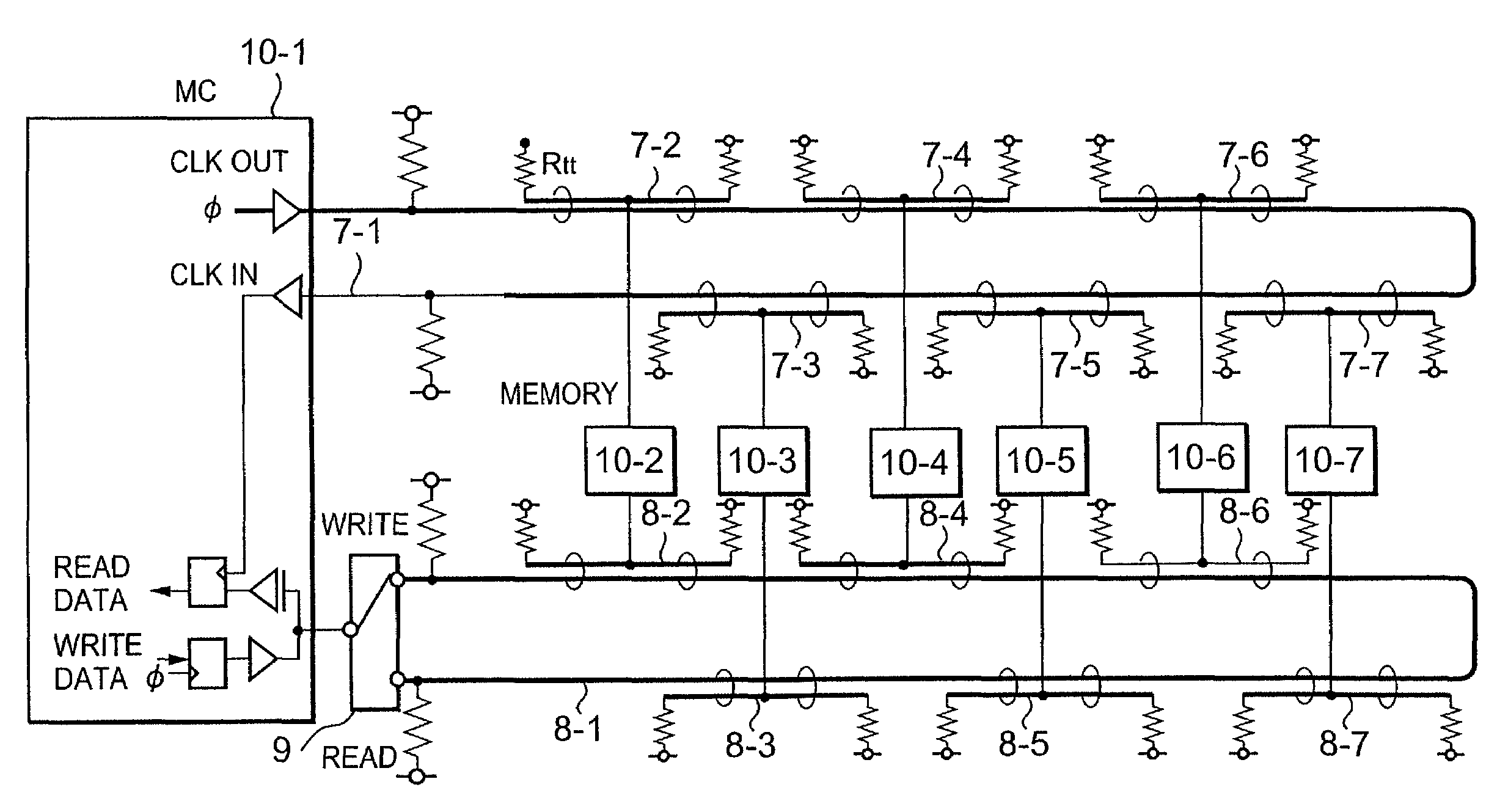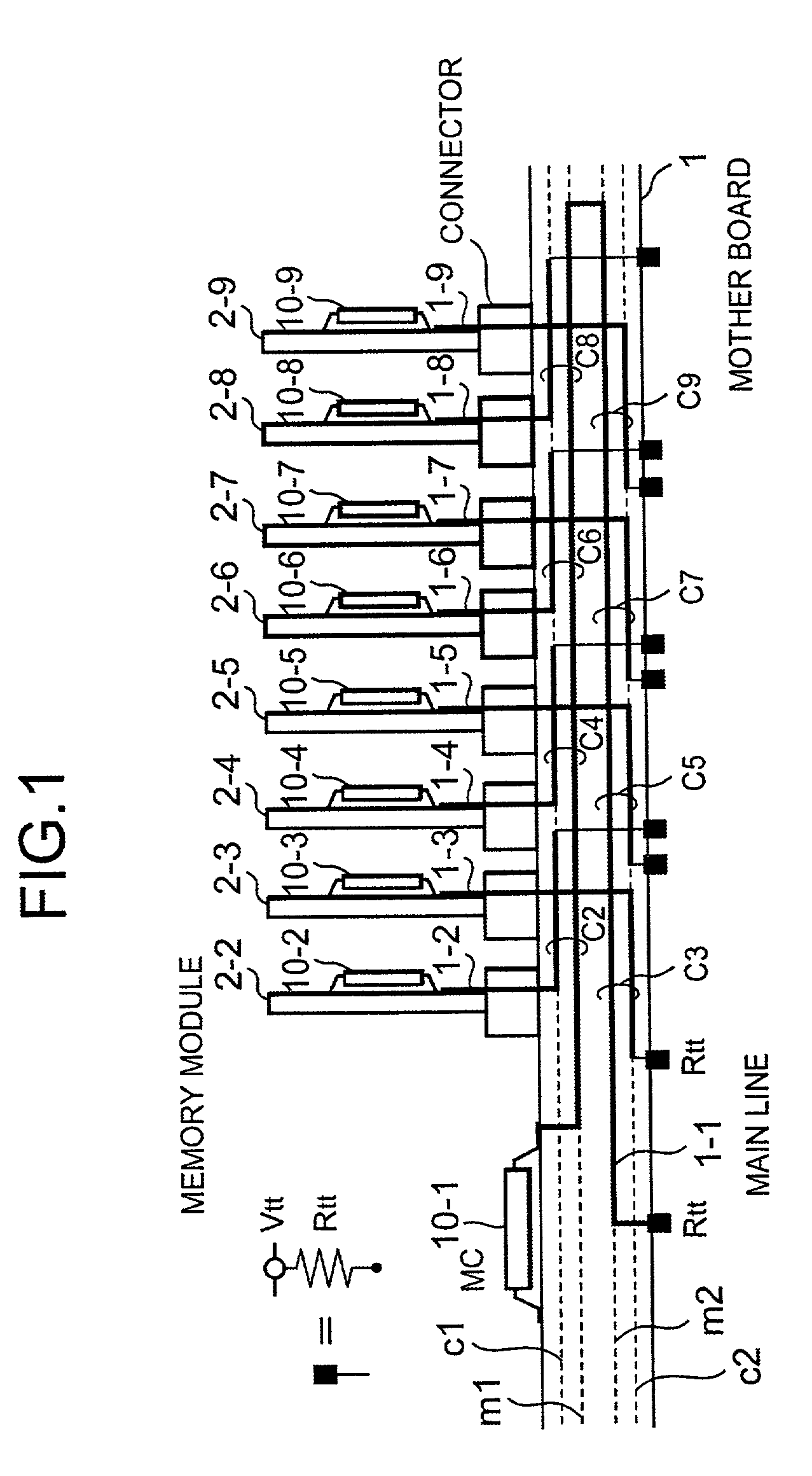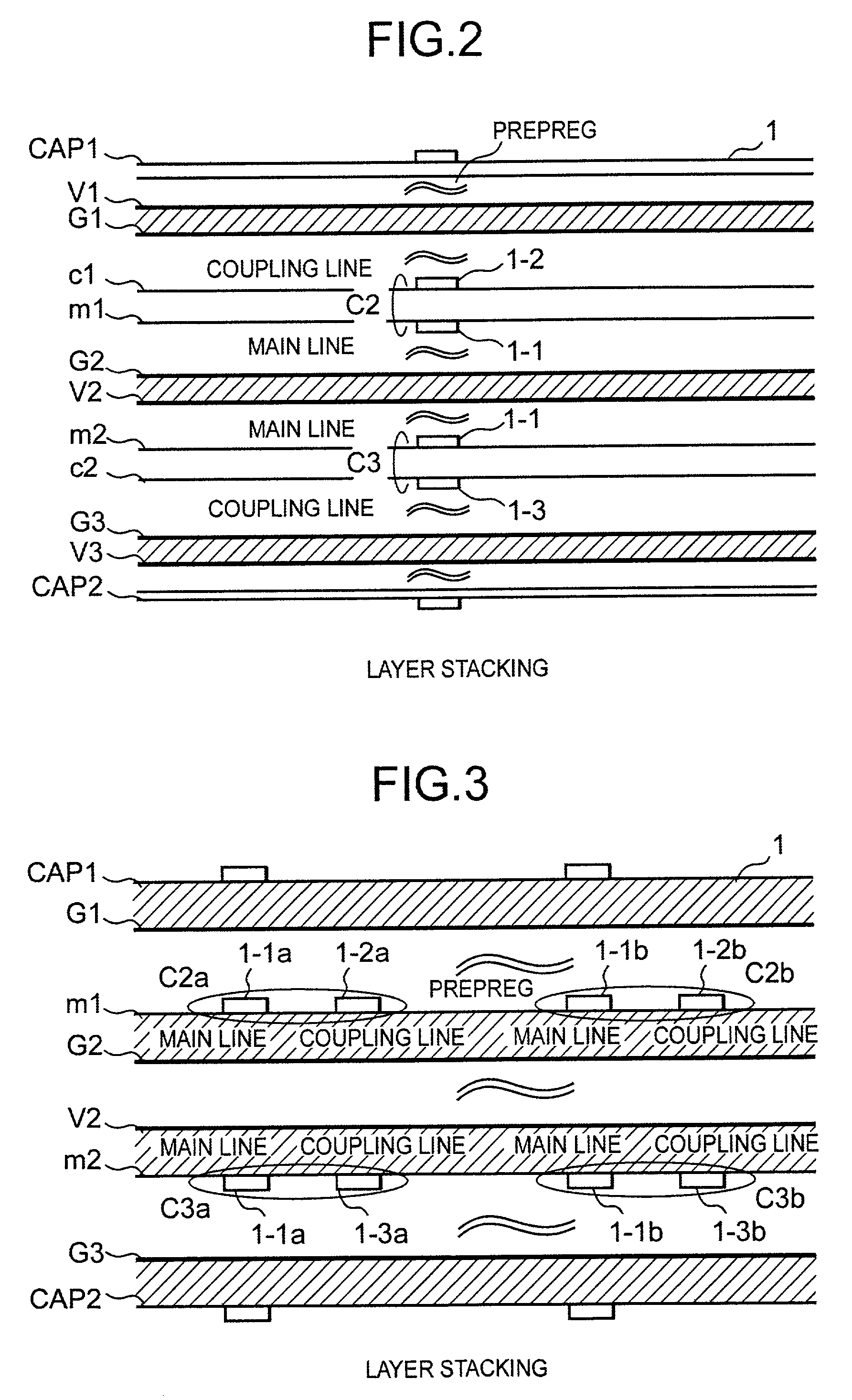Bus system, memory system, printed circuit board and directional coupler
a bus system and memory technology, applied in the field of signal transmission, can solve the problems of reducing transmission efficiency, reducing the density of memory mounting, and the inability to make each interval less than a certain length, so as to achieve high density mounting, shorten the pitch of modules, and sharpen the waveform
- Summary
- Abstract
- Description
- Claims
- Application Information
AI Technical Summary
Benefits of technology
Problems solved by technology
Method used
Image
Examples
first embodiment
[0045]A first embodiment will be described referring to FIG. 1.
[0046]A reference numeral 10-1 refers to an LSI chip (hereinafter referred to as MC: Memory Controller) having a control function as a memory controller, and 2-2–2-9 to memory modules each mounted with a plurality of memory chips 10-2–10-9. A printed circuit board 1 is a mother board that is mounted with MC 10-1 and the memory modules 2-2–2-9 and has lines permitting data transfer between MC 10-1 and the memory chips 10-2–10-9 within the memory modules 2-2–2-9. The memory modules 2-2–2-9 are connected to the mother board via connectors.
[0047]MC 10-1 carries out operations of data read and write into the memory chips 10-2–10-9. Reference numerals 1-1–1-9 refer to lines for data transfer carried out for those read and write operations. Among these lines, the line 1-1 connected to MC 10-1 is particularly called a main line.
[0048]Broken lines m1, c1, m2 and c2 within the mother board refer to signal layers within the board, ...
second embodiment
[0063]A second embodiment is shown in FIG. 6. Also, arrangement and wiring in FIG. 6 can realize high-density mounting of memory modules. In FIG. 6, like symbols have like functions as in FIG. 1. FIG. 6 differs from FIG. 1 in construction of directional couplers. Namely, a main line 1-1 is arranged straight, and the directional couplers are located on both the left and right sides of the main line in an alternating way, with the other set of lines 1-2–1-6 of the directional couplers C2–C6 being on the other side.
[0064]FIG. 7 shows an example of wiring of the mother board 1 of this FIG. 6. FIG. 7 is a view of the memory system of FIG. 6 seen from the side of the upper surface. The lines shown in FIG. 7 correspond to one bit of data, among the many lines existing in the same signal layer. In the mother board 1, there are arranged MC 10-1 and connectors 2-6 to which the memory modules 2-2–2-6 are to be connected. Data signal in the memory system is connected through a bus, so that one ...
third embodiment
[0069]A third embodiment is shown in FIG. 8. By folding a main line in a same layer as shown in FIG. 8, high-density mounting of memory modules can be realized.
[0070]FIG. 8 has the same structure as FIG. 1 from the electric viewpoint. Similarly to FIG. 7, FIG. 8 is a view of a mother board 1 seen from the side of its upper surface. In FIG. 8, the main line 1-1 from MC 10-1 is folded in a same signal layer within the board (mother board) 1. A signal from MC 10-1 is coupled to signal pins located in the same position in connectors 2-6. The main line 1-1 is wired in the same layer, to enclose those signal pins.
[0071]With respect to this main line 1-1, lines 1-2–1-6 from the connectors 2-6 are formed such that couplers C2–C6 correspond to every other connectors arranged successively, being coupled to the main line 1-1 before folding and the main line 1-1 after folding. Of course, the connectors 2-6 and the main line 1-1 are terminated, and there is no reflection distortion at their term...
PUM
 Login to View More
Login to View More Abstract
Description
Claims
Application Information
 Login to View More
Login to View More - R&D
- Intellectual Property
- Life Sciences
- Materials
- Tech Scout
- Unparalleled Data Quality
- Higher Quality Content
- 60% Fewer Hallucinations
Browse by: Latest US Patents, China's latest patents, Technical Efficacy Thesaurus, Application Domain, Technology Topic, Popular Technical Reports.
© 2025 PatSnap. All rights reserved.Legal|Privacy policy|Modern Slavery Act Transparency Statement|Sitemap|About US| Contact US: help@patsnap.com



